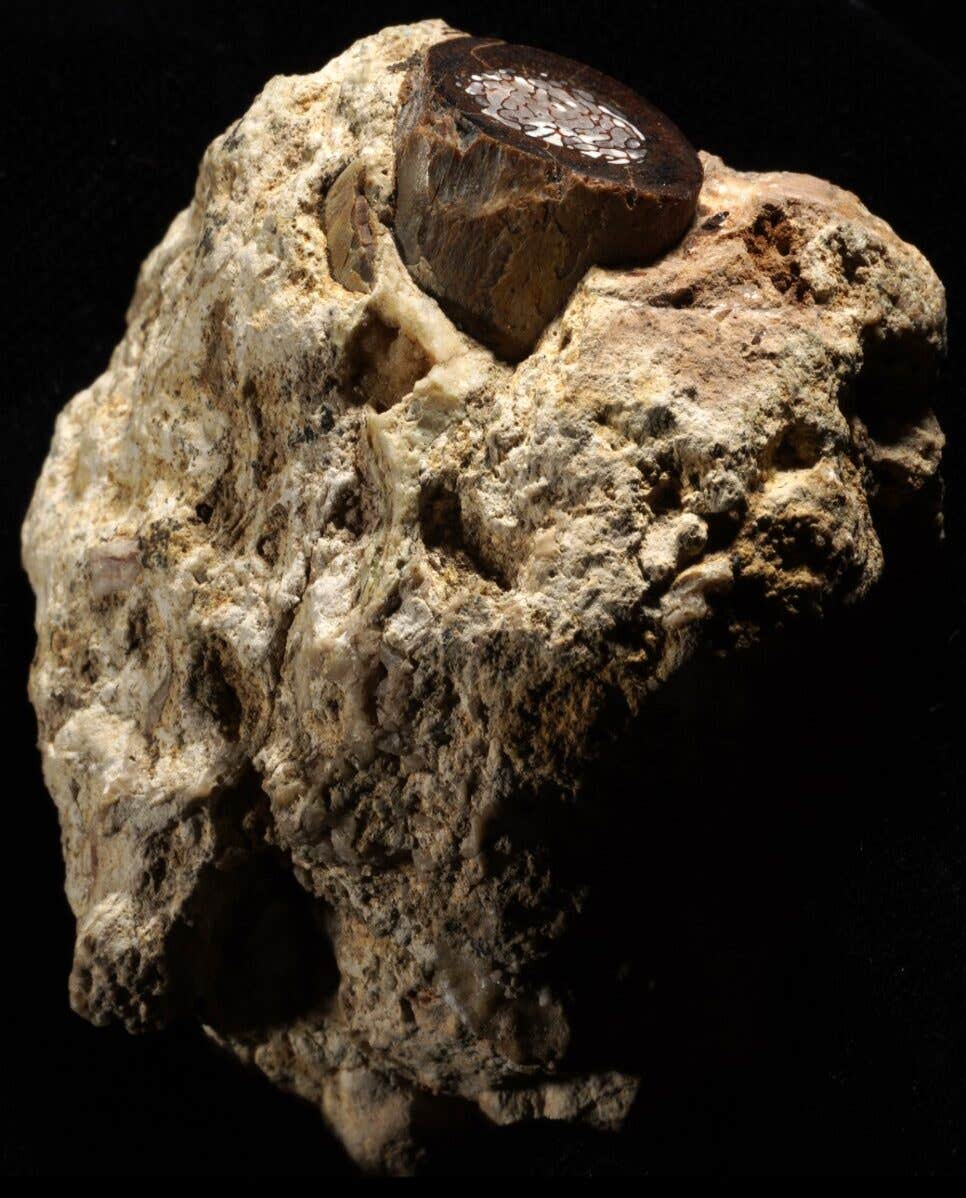Groundbreaking new study explains why hair turns gray
Stem cells are nature’s built-in repair crew, holding the power to regenerate tissues and maintain youthful features. Yet not all stem cells age equally.

Stem cells are nature’s built-in repair crew, holding the power to regenerate tissues and maintain youthful features. (CREDIT: Adobe Stock)
Stem cells are nature’s built-in repair crew, holding the power to regenerate tissues and maintain youthful features. Yet not all stem cells age equally. One type—melanocyte stem cells, or McSCs—tends to fail earlier than others. When they falter, one visible result is gray hair.
A recent study published in Nature has opened a new window into how these pigment-linked cells behave. The findings show why McSCs lose function over time and point toward the possibility of reversing this process. These insights could fuel future therapies and deepen our understanding of how aging works at the cellular level.
Exploring the Role of Stem Cells in Hair Color
McSCs live inside hair follicles and control hair color by producing pigment-producing cells called melanocytes. Their ability to move within the follicle is key. As they shift between compartments, they toggle between being dormant stem cells and active pigment-makers. This mobility lets them regenerate and contribute to new hair color over multiple growth cycles.
What sets McSCs apart is their unusual flexibility. Unlike many stem cells that progress in only one direction as they mature, McSCs can flip back and forth between states. Live imaging and single-cell RNA sequencing have shown how these cells react to local signals, especially WNT proteins, which guide them toward differentiation. These signals play a critical role each time a hair follicle regenerates.
In a healthy hair cycle, McSCs travel downward during the growth phase and transform into melanocytes that add color to new hair. But as the body ages, many of these cells get stuck. They become stranded in the follicle’s bulge area and stop moving. Without mobility, they can no longer mature into melanocytes, and the hair grows in gray.
At NYU Grossman School of Medicine, researchers explored this effect using a mouse model. They mimicked aging by repeatedly plucking hair and forcing regrowth. In younger mice, only 15% of McSCs got trapped. But in aged ones, nearly half became immobile. These stuck cells couldn’t regenerate or produce pigment. In contrast, the mobile ones kept working for up to two years.
This pattern reveals something important. McSCs don’t just wear out—they lose their unique ability to switch roles and locations. While many stem cells follow a fixed path toward maturity, McSCs rely on their plasticity to preserve hair color. That flexibility fades with age, but understanding this mechanism brings scientists closer to finding ways to restore it.
Related Stories
“It is the loss of chameleon-like function in melanocyte stem cells that may be responsible for graying and loss of hair color,” explains Dr. Mayumi Ito, senior investigator of the study. She adds, “Our findings suggest that motility and reversible differentiation are key to keeping hair healthy and colored.”
The Role of WNT Signaling and Future Directions
WNT signaling plays a pivotal role in McSC function. In earlier studies, this pathway was shown to stimulate McSCs to mature and produce pigment. However, the follicle bulge exposes McSCs to significantly fewer WNT signals compared to the germ compartment, where these proteins are abundant. This imbalance underscores the importance of cellular mobility for maintaining pigmentation.
To further explore these dynamics, the research team plans to investigate methods to restore McSC motility. “If we can physically move jammed cells back to their germ compartment or enhance their motility, we might prevent or reverse graying,” says Dr. Qi Sun, lead investigator of the study.
Potential approaches include using small molecules or other agents to encourage McSC movement. These interventions could not only preserve hair color but also provide insights into aging mechanisms in other tissues. McSC plasticity suggests that similar principles might apply to stem cells responsible for tissue maintenance and regeneration throughout the body.
Implications Beyond Hair Color
The implications of McSC research extend far beyond aesthetics. Stem cells are vital for tissue regeneration and are studied for their potential to treat various diseases. McSC findings could inform broader research into aging and regenerative medicine. For instance, understanding how to restore stem cell functionality could lead to therapies for conditions where cellular repair mechanisms falter, such as neurodegenerative diseases or certain cancers.
Despite their promise, stem cell therapies face ethical and safety challenges. Some worry about the use of embryonic stem cells, while others question the long-term safety of experimental treatments. However, advances in induced pluripotent stem cells—which do not rely on embryos—and rigorous clinical trials provide a path forward.
The research at NYU Grossman highlights the transformative potential of stem cell science. By uncovering how McSCs lose functionality and exploring ways to restore their mobility, scientists pave the way for innovative treatments.
These advancements not only address cosmetic concerns like graying hair but also deepen our understanding of aging and cellular regeneration. As the research progresses, it may unlock solutions for a wide range of age-related conditions.
Perception of Gray Hair in Society
The perception of gray hair in society has evolved significantly across cultures and historical periods, reflecting changes in attitudes toward aging, wisdom, and beauty.
Ancient and Historical Views:
- Symbol of Wisdom and Respect: In many ancient societies, gray hair was seen as a marker of experience and wisdom. For instance, in ancient Greece and Rome, elders with gray hair were often respected for their perceived knowledge and life experience. Similarly, Confucian values in East Asia emphasized filial piety, associating gray hair with dignity and authority.
- Religious and Cultural Significance: In some traditions, gray or white hair was linked to spiritual purity or divine favor. For example, in certain Native American cultures, gray-haired elders were revered as keepers of knowledge and spiritual guides.
Middle Ages to Early Modern Period:
- Practical Associations: During the medieval period, life expectancy was lower, and gray hair often indicated survival into an advanced age, which was itself seen as a rarity and an achievement.
- Shifts in Fashion and Beauty: In European Renaissance and Baroque societies, powdered wigs in white or gray shades became fashionable among the aristocracy, blending notions of sophistication, wealth, and age.
19th and Early 20th Century:
- Youth and Beauty Idealization: With the rise of industrialization and modern beauty standards, youthfulness began to be idealized, and gray hair became increasingly associated with aging and decline. Hair dyes emerged in the late 19th century, providing a means to conceal gray hair and maintain a youthful appearance.
Mid-20th Century:
- Stigma Around Aging: The post-war era saw a growing emphasis on youth in advertising and media, reinforcing negative connotations around gray hair. Both men and women began using hair dye in greater numbers to project vigor and relevance in professional and social settings.
- Professional Bias: Gray hair was sometimes viewed as a disadvantage in competitive industries, especially for women, where appearance often played a larger role in career progression.
Late 20th Century to Present:
- Empowerment and Reclamation: Beginning in the late 20th century, movements advocating for authenticity and self-acceptance challenged the stigma around gray hair. High-profile figures, such as celebrities and activists, began embracing their natural gray, sparking a cultural shift.
- Modern Beauty Trends: In the 21st century, gray hair has been redefined as a stylish and empowering choice. Fashion trends even popularized "silver hair" dye among younger generations, framing gray as a chic and deliberate aesthetic.
- Cultural Nuances: While gray hair is now widely accepted in some societies as a natural part of aging, other cultures continue to emphasize youth and may perceive gray hair differently.
Today, gray hair is often celebrated as a symbol of confidence and individuality, signaling a broader acceptance of aging and natural beauty in many parts of the world. However, attitudes remain complex and vary depending on cultural, generational, and social factors.
The study's co-authors include Minwoo Kim, Bo Zhang, Vivian Lee, Bin Wu, Zhiwei Ma, Michael Peckerar, Luiza Baptista, Sadegh Davari, David R. Drummond, Jessica G. Yeh, and Elsa Quintana-Bustamante.
Note: Materials provided above by The Brighter Side of News. Content may be edited for style and length.
Like these kind of feel good stories? Get The Brighter Side of News' newsletter.



